BeoCord 4000
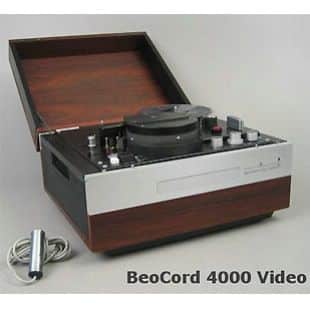
Beocord 4000 Video is shown here with Beovision 500 monitor (1969).
Video Camera 4000 could also be used with the video recorder, shown in the photo.

Beocord 4000 Video is shown here with Beovision 500 monitor (1969).
Video Camera 4000 could also be used with the video recorder, shown in the photo.
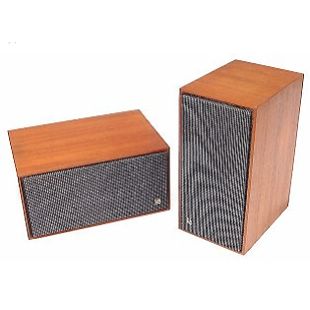
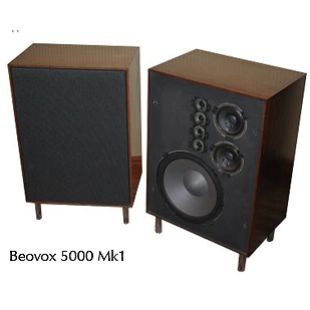
Beovox 5000 was the ideal loudspeaker for the Beolab system.
It had a special bass unit with an extended bass reproduction range, two mid-range units and four high-frequency units. There was provision for individual of mid-range and high-frequency levels and a socket for a high-frequency diffuser (Beovox 2500).
There were three differing incarnations during its life: the first had seven drivers incorporated within its 66 litre cabinet. Available in three different finishes, the B&O logo was gold-plated. Beovox 5700 was the replacement for these high-quality units when their lifespan came to an end.
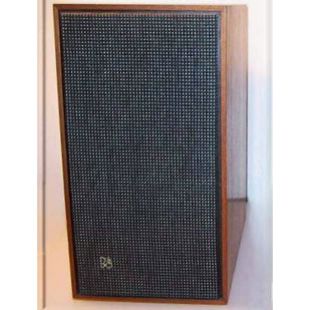
“B&O loudspeakers will meet very exacting conditions as their specifications exceed international hi-fi standards. All B&O speakers are of the pressure-chamber type with an impedance of 4 ohms. They are available in matched pairs only in a choice of teak or Brazilian rosewood finish”
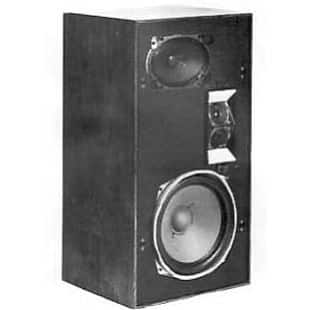
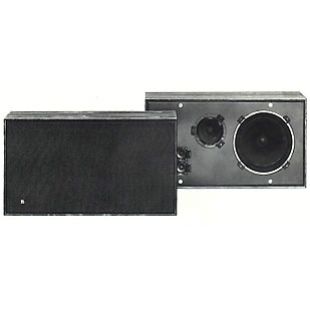
Beovox 3000 was the ideal smaller loudspeaker for the Beolab system: it had a special bass unit, a separate mid-range and two high frequency units. There was provision for individual adjustment of mid-range and high-frequency levels, and a socket for a high-frequency diffuser (Beovox 2500).
Beovox 3000 type 6220 and 6238 was a pressure-chamber loudspeaker with a specially-designed bass unit, a separate mid-range speaker and two high-frequency speakers – a total of four units. There was a crossover network and provision for individual adjustment of mid-range and high-frequency levels. There was also provision for the connection of a high-frequency diffuser. The maximum power handling capacity was 50 Watts.
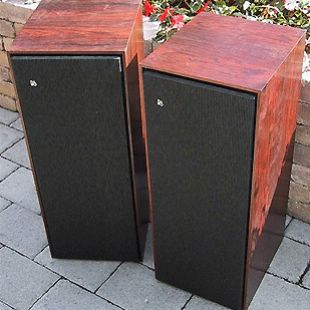
Rated at 30W, the Beovox 2600 was powerful enough to be used with the Beomaster 3000, though it was also recomended for use with the Beomaster 1000, 1200 and 1600.
Slightly larger than the Beovox 1200 of the same year, it was fitted with an 8” woofer with a rubber roll edge and a 1.5” dome tweeter. Befitting a loudspeaker to be used with the excellent Beomaster 3000, the Beovox 2600 met all the conditions of the DIN 45 500 “hi-fi” standard.
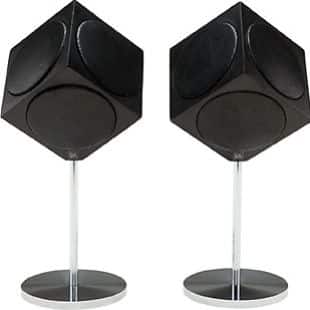
Beovox 2500 Type 6211 were ‘cube tweeter’ speakers, launched at the same time as the innovative BeoLab 5000. The Beovox 2500 Cube loudspeakers were developed to complement both the Beomaster 5000 and BeoLab 5000 in order to spread the high tones. For decades, controlling the directivity and dispersion of particularly the higher frequencies has been a key concern for loudspeaker designers worldwide.
The ability to control the higher frequencies is crucial, as they carry the majority of sonic information about what you are listening to, and where the sound is coming from. During the 1960s, Bang & Olufsen’s Acoustic Engineers were just as concerned with creating a “quality stereo” experience. Whereas it did not matter just how bass frequencies were distributed (as the human ear cannot differentiate the direction of low frequencies) the problem of ensuring good dispersion of midrange and treble frequencies has always persisted.
The problem back then was the same as today; whereas there is no directional problem with the bass, how to ensure dispersion of the midrange and treble? The focus was on the treble, as the higher the frequency range, the narrower the field of dispersion. Beovox 2500 Cube, released in 1967, was an attempt at an omni-directional treble loudspeaker, where the six driver units in the cube-shaped cabinet overlapped to cover all fields. The six driver units, one on each face of the cube, presented a rather special placement problem, which was solved by balancing the loudspeaker on one of the corners. It could therefore rest on a stand or hang from the ceiling.
Of course, with the overlapping fields and reflections from walls, floor and ceiling, the solution wasn’t perfect, but the Beovox 2500 Cube received universal acclaim from audiophile circles at the time for its ability to provide omnipresent sound. Its compact proportions and design, as well as the idea behind it have all contributed Beovox 2500 Cube’s current status as a cult product.
With its six high-frequency tweeters radiating in all directions, Beovox 2500 could be base- or wall-mounted, or even mounted from the ceiling. The compact speakers ensured complete spatial distribution of the highest notes, and its maximum power handling capacity in the range above 2000 Hz was 60W. The speaker was the ideal tweeter for a Beolab system. It could be connected to Beovox 5000 and Beovox 3000.
At the 1967 spring fair in Hanover, B&O and Jacob Jensen – the designer of the speakers – received the IF award for the Beomaster 5000, BeoLab 5000 and Beovox 2500 Cube loudspeakers for outstanding and user-friendly design.
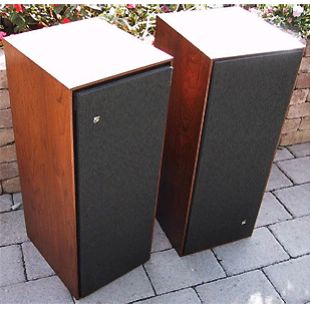
“B&O loudspeakers will meet very exacting conditions as their specifications exceed international hi-fi standards. All B&O speakers are of the pressure-chamber type with an impedance of 4 ohms. They are available in matched pairs only in a choice of teak or Brazilian rosewood finish” – taken from the 1967 – 1968 Bang & Olufsen product catalogue
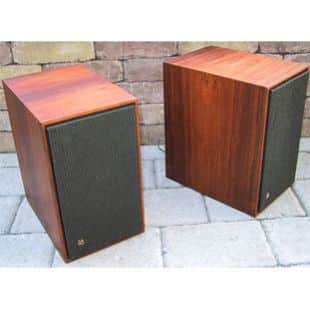
B&O loudspeakers will meet very exacting conditions as their specifications exceed international hi-fi standards. All B&O speakers are of the pressure-chamber type with an impedance of 4 ohms. They are available in matched pairs only in a choice of teak or Brazilian rosewood finish
Only being available for two years, these small bookshelf speakers
are not that well known. With their old style cone tweeter but a modern small size, they can be considered a link between the 1960s and 70s. The small power handling capacity probably was to be blamed for their demise though, as most receivers introduced in the early ’70s already well exceeded the rated power.
These aren’t the speakers to use at a party, but at moderate volume they produce a very pleasing warm sound especially with acoustic music. The cone tweeter however makes them highly directional, so they are best used in set-ups where you can direct them straight at the preferred listening position.
Beovox 2200 bass drivers have rubber roll edges, so there is no need to worry about foam rot. If the speakers sound fine with all drivers working, they should be a safe buy even without further investigation. The frets, constructed on a wood/metal frame, are however easy to carefully pry off for inspection.
These speakers blend very well on a bookshelf, taking only a little bit more space than, say, a CX100 – and a small, golden old style B&O emblem on the fret accentuates the look. Highly recommended
to complete a vintage set-up with a contemporary Beomaster 900M, for example.